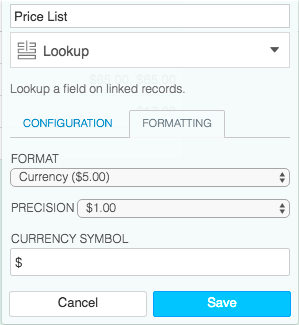Hi to all,
Anyone can help/hint to this :slightly_smiling_face:
Have a field “formula” in table A
and want in this field the Average of the all field “currency” locate in table B
or better
have a table PRODUCT and want the average of all price offer from table VENDORS (every vendors have the different price for the same products)
any help is appreciate
(from my and all like this)
Thank you





